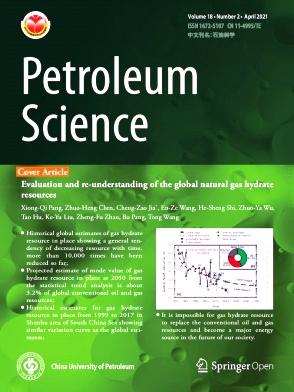Experimental study of microscopic oil production and CO2 storage in low-permeable reservoirs
IF 6
1区 工程技术
Q2 ENERGY & FUELS
引用次数: 0
Abstract
Enhanced CO2 sequestration (ECS) within low-permeable reservoirs during CO2-enhanced oil recovery (CO2-EOR) processes has gained significant interest, primarily driven by the need to mitigate the greenhouse effect caused by excessive CO2 emissions. In this work, the in-situ nuclear magnetic resonance (NMR) is applied to investigate the oil production and CO2 sequestration within the micropores of low-permeable reservoirs. Additionally, the impact of CO2–water–oil–rock reactions on CO2-EOR and CO2 sequestration is studied by analysis of the changes in minerals, pore structures, and wettability of cores by scanning electron microscopy (SEM), X-ray diffraction (XRD), and contact angle measurements with the experiments of CO2–water–oil–rock interaction in the high-temperature and high-pressure (HT-HP) reactor. The results reveal that the residual water saturation (Swr), CO2 injection pressure, and the interaction among CO2, water, oil, and rock all exerted a considerable impact on oil recovery and CO2 sequestration. Compared with the oil recovery and CO2 sequestration of the two oil-saturated cores (Core No. 2 and Core No. 3) after CO2 injection, the accumulated oil recoveries of the two cores with Swr = 0.5 are enhanced by 1.8% and 4.2%, and the CO2 sequestration ratios are increased by 3% and 10%, respectively. Compared with the CO2–water–rock that occurred in oil-saturated cores, the CO2–water–rock reaction for cores (Swr = 0.5) is more intense, which leads to the formation of more hydrophilic rock on pore surfaces after the reaction, thereby reducing the adhesion work of CO2 stripping oil. The oil and water mixtures in pores also inhibit CO2 premature breakthrough from cores, therefore expanding the swept volume of CO2 in cores. Otherwise, oil recovery and CO2 sequestration in small pores of cores are significantly improved with the rise in CO2 injection pressure due to the enhanced driving pressure degree and also the improved mutual solubility and mass transfer between CO2 and oil.
求助全文
约1分钟内获得全文
求助全文
来源期刊

Petroleum Science
地学-地球化学与地球物理
CiteScore
7.70
自引率
16.10%
发文量
311
审稿时长
63 days
期刊介绍:
Petroleum Science is the only English journal in China on petroleum science and technology that is intended for professionals engaged in petroleum science research and technical applications all over the world, as well as the managerial personnel of oil companies. It covers petroleum geology, petroleum geophysics, petroleum engineering, petrochemistry & chemical engineering, petroleum mechanics, and economic management. It aims to introduce the latest results in oil industry research in China, promote cooperation in petroleum science research between China and the rest of the world, and build a bridge for scientific communication between China and the world.
 求助内容:
求助内容: 应助结果提醒方式:
应助结果提醒方式:


